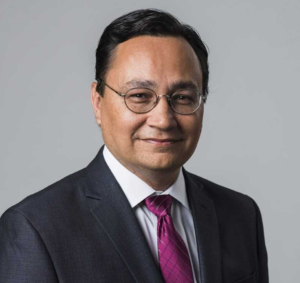At Cherokee Nation, we remain deeply invested in ensuring good education for Cherokees and all children living in our 14-county jurisdiction. Each year, we provide millions from our car tag revenues to support local schools. We are also highly involved in making sure children receive accurate lessons on Native American culture and history, as well as culturally competent support for reaching the college or career of their dreams.

This work requires us to closely collaborate with the Oklahoma State Department of Education. An important place where this collaboration happens is in the Oklahoma Advisory Council on Indian Education. That’s why I was glad to see the Oklahoma Legislature pass a bill this year that will extend the OACIE for another three years.
We hope our public schools in Oklahoma return to normalcy in the fall and the OACIE continues to prioritize our tribal youth.
Nearly one in five students in Oklahoma Public Schools are Native American. These students have diverse backgrounds and tribal affiliations. A one-size-fits-all approach will not work to reach all of these students. It takes collaboration among many diverse tribal, state and education leaders.
The 18-person OACIE includes representatives from tribal nations, state agencies, teacher organizations and school superintendents. This group meets quarterly to analyze data on the needs of American Indian students. They strategize about how our schools can better meet those needs. Their mission includes promoting American Indian leaders at all levels of the education system, because Native children need to see role models in their schools who look like them, and who understand their culture and point of view.
With guidance from OACIE and tribal leaders, Oklahoma has produced educational information about each of the 38 federally recognized tribes in our state and shared lesson plans covering our tribal history, culture, governments and modern lifestyle.
For Cherokee Nation, the lessons describe how we are carrying on the practice of “gadugi,” working together to improve our communities. They remind students that Cherokee Nation is a powerful and positive force in Oklahoma, with contributions that are growing the economy, preserving our history and revitalizing our culture.
We have come a long way from the days when children were taught about Indians as though we were a footnote from the past, not the living, thriving tribal governments and peoples that we are today. The OACIE helps to make sure this curriculum keeps improving, keeps evolving.
Oklahoma succeeds when it eagerly invites tribal nations to the table. I am proud of the partnerships that Cherokee Nation has made with our fellow Oklahomans in state agencies, in our public school districts and in the Legislature. We may sometimes disagree with one another and struggle to be understood, but we find hope when we remember that we are building something together for the next generation of Cherokees and Oklahomans.
If we cannot show the next generation that we can work together effectively for that common cause, what kind of role models will we be?
Chuck Hoskin, Jr. is the principal chief of the Cherokee Nation.
More Stories Like This
Biden Nominates Salish & Kootenai Tribal Attorney Danna Jackson for Federal BenchA Conversation With Lt. Gov. Peggy Flanagan: What We Can Celebrate Around the State
Return to the Heart Foundation Gives 44 Micro-Grants to Native Women Leaders
Indigenous Journalists Association President Addresses Members of the UNPFII
Inter-Tribal Council Passes Resolution Urging FCC to Establish Specific Event Code for Missing and Endangered Persons
Native Perspective. Native Voices. Native News.
We launched Native News Online because the mainstream media often overlooks news that is important is Native people. We believe that everyone in Indian Country deserves equal access to news and commentary pertaining to them, their relatives and their communities. That's why the story you’ve just finished was free — and we want to keep it that way, for all readers. We hope you'll consider making a donation to support our efforts so that we can continue publishing more stories that make a difference to Native people, whether they live on or off the reservation. Your donation will help us keep producing quality journalism and elevating Indigenous voices. Any contribution of any amount — big or small — gives us a better, stronger future and allows us to remain a force for change. Donate to Native News Online today and support independent Indigenous-centered journalism. Thank you.
